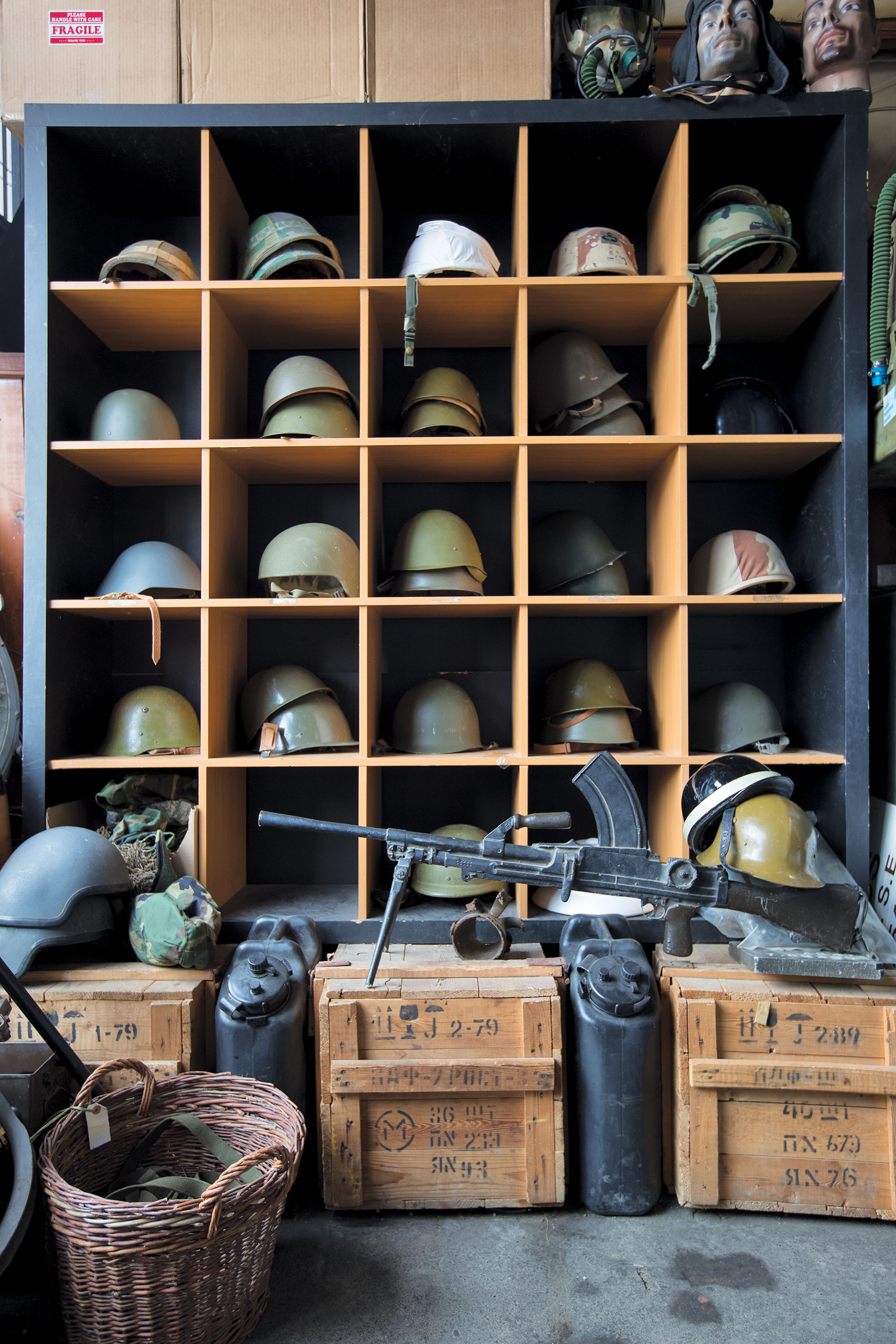
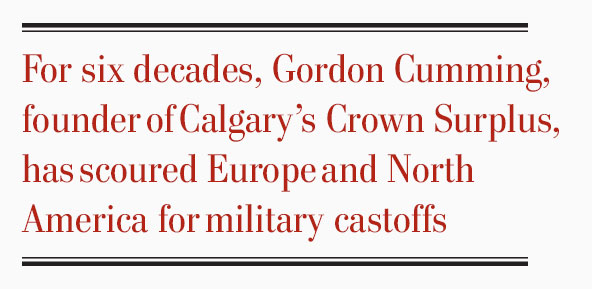
If you can navigate the aisles of tactical gear, negotiate the crates, cartons and overstocked shelves of surplus military goods, and traverse the cluttered stairs to a hole-in-the-wall office buried in the deepest corner of Crown Surplus, you just may be lucky enough to discover the real treasure of 11th Street SE in Calgary.
For more than 60 years, Gordon Cumming has been on a grand hunt for hidden gems from past conflicts. While he has handed day-to-day operations over to his son John, the 87-year-old still shows up to work almost every day.
He can usually be found seated behind his typewriter-laden desk, a tin box filled with a lifetime of contacts within arm’s reach and an old calico cat napping right on the border of his workspace, if not breaching it. There’s a security monitor, but nary a computer in sight. “I kinda used a paper, a pencil and an eraser,” said Cumming. “I never did get into the computer very much.”
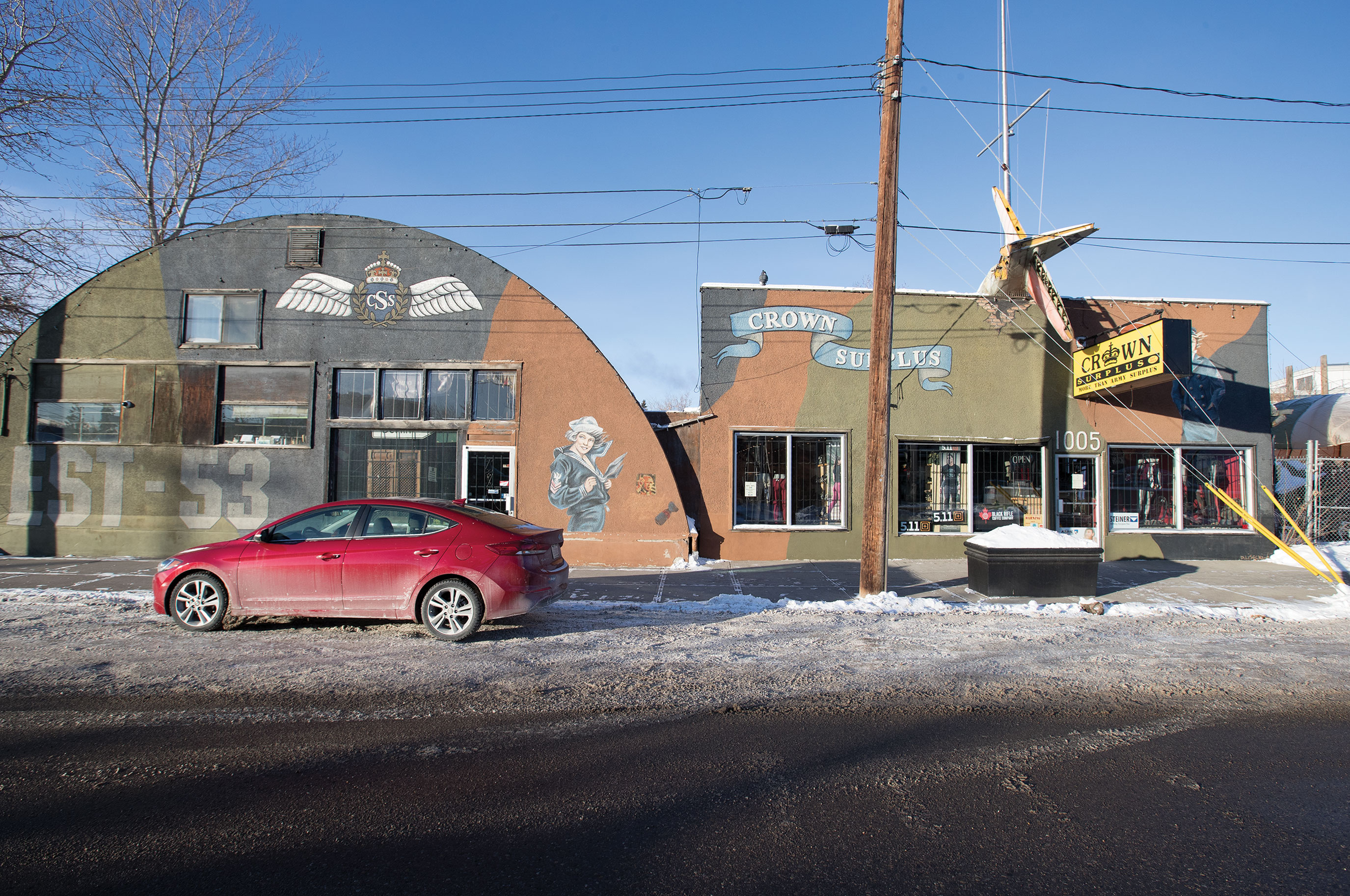
The business, which has ventured into selling new outdoor and tactical gear, is in good hands, but Cumming can’t help himself. Crown has been his passion since his father Al first rented the building and turned him loose to make something of it in 1952.
He has long since bought the place—comprising adjacent buildings and a lot—and commutes from his home in Priddis, Alta., a 40-minute drive on a good day, “just for the aggravation.” To Cumming, retirement constitutes staying home when he feels like it and second-guessing his younger staff when he doesn’t.

Former Calgary Herald columnist John Hopkins once said in jest that Cumming had “all the appeal of a wounded grizzly,” and called his store “the most disreputable-looking building south of the treeline.”
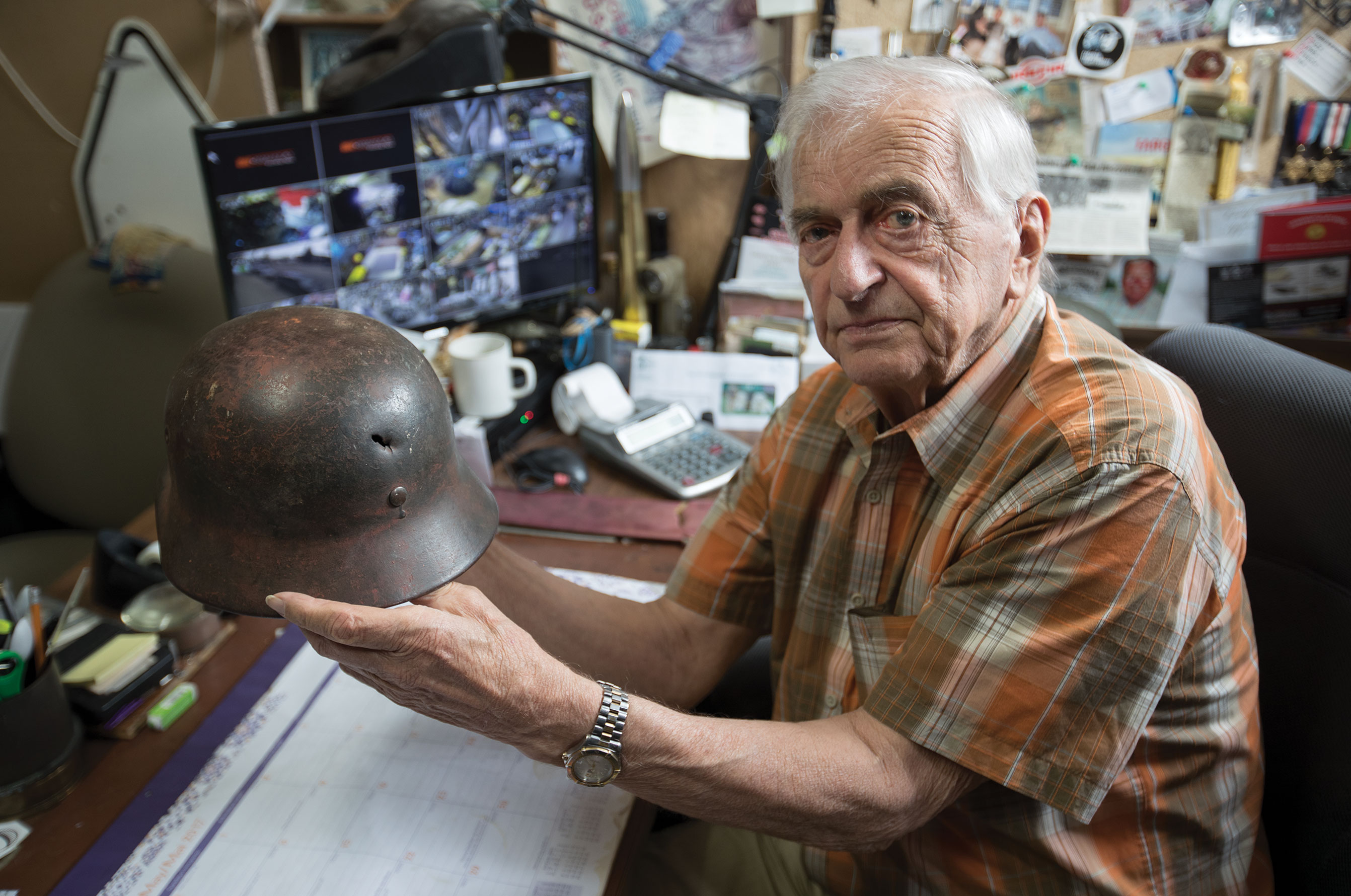
The boss appears to have mellowed, and the property has subsequently gotten a slick new paint job. Cumming himself used to write a weekly column for the Herald about his latest finds. His office evolved into a veritable museum of personal mementoes and artifacts.
Besides the usual trappings, there is a pilot’s silk map of Vietnam and a large beer stein from an officer’s mess in Cold War West Germany, bristling with daggers and bayonets of different eras and various armies.
There’s a framed picture of Luftwaffe ace Adolph Galland and his British rival, Johnnie Johnson, at a postwar reunion. An American walkie-talkie, plucked from a pile Cumming discovered in the Netherlands years ago, sits next to a bugle and several binoculars.
Shoved among the binders and invoices, business cards, books and several dictionaries is a French helmet, a sailor’s cap from the light aircraft carrier HMCS Magnificent, an armload of pineapple grenades (duds, presumably), and jars brimming with buttons, ID tags and other assorted bits.
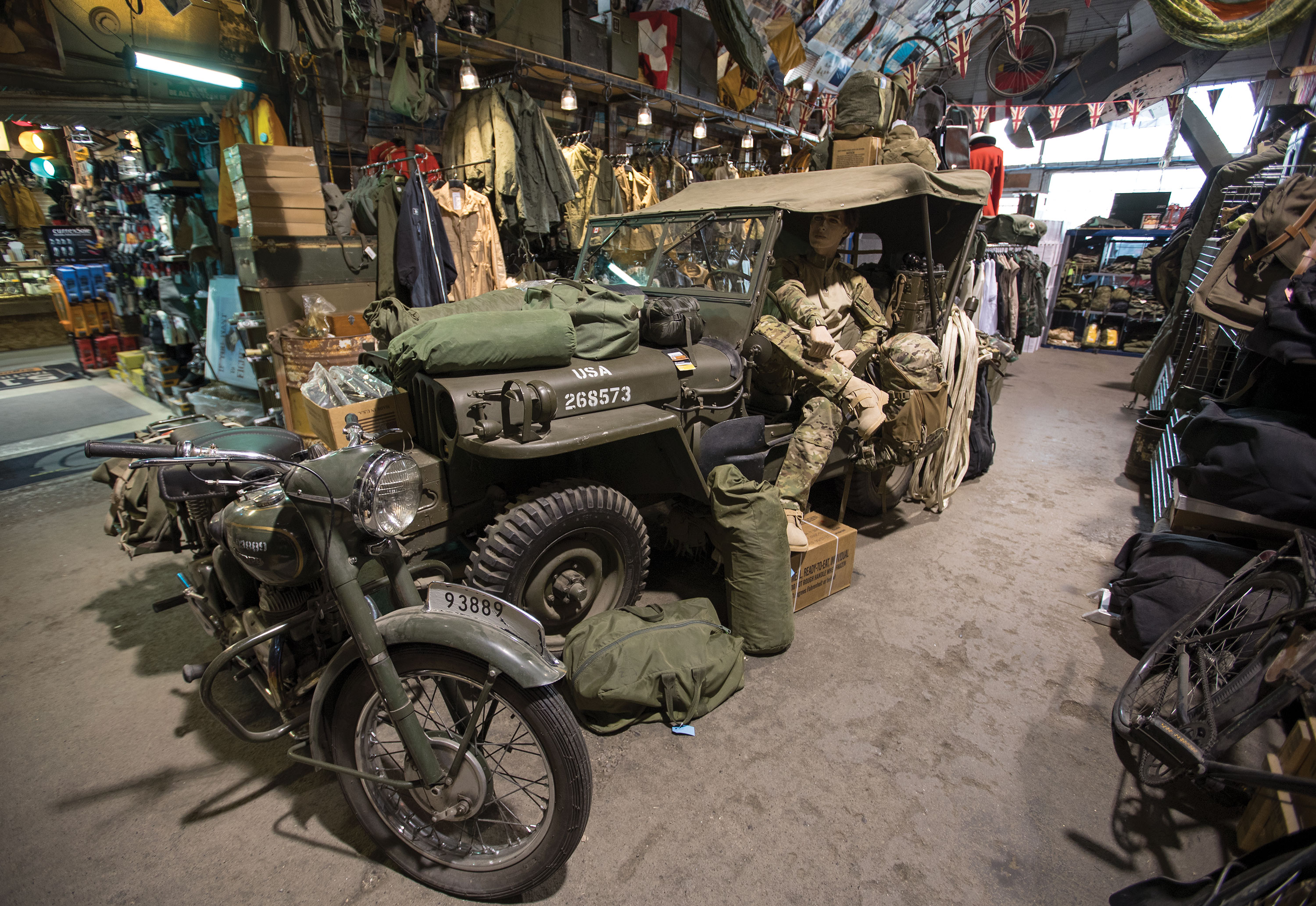
His personal collection includes a pith helmet from German Field Marshal Erwin Rommel’s North African campaign and a Wehrmacht helmet with a shrapnel hole through it.
Cumming scoured Europe and North America mainly—attending trade shows, chasing leads and tracking down collectors in his search for unique pieces, inventories and stockpiles. More items landed on his desk as veterans’ families started bringing in their recently deceased relatives’ wartime mementoes and keepsakes for sale or trade.
“It’s always been an interesting go-around,” he said, with typical understatement. “It was exciting putting the military surplus items back to work again. You could buy it for a lot less than it cost new. It just seemed to continually grow all the time.”
The business was built on both the practical and the collectible.
“Anything that was hard to get was always very sought-after,” he said. “The Nazi stuff was always in high demand by collectors.”
An early purchase was made in Norway, where he found 32,000 German helmets at $2.50 apiece. Back home, Cumming’s banker “choked” at his request for a loan. “I checked all the other banks in the city,” he recalled. “They all turned me down.” His banker found him someone willing to guarantee a loan. Cumming told the man he’d pay it back in three months. It took him six.
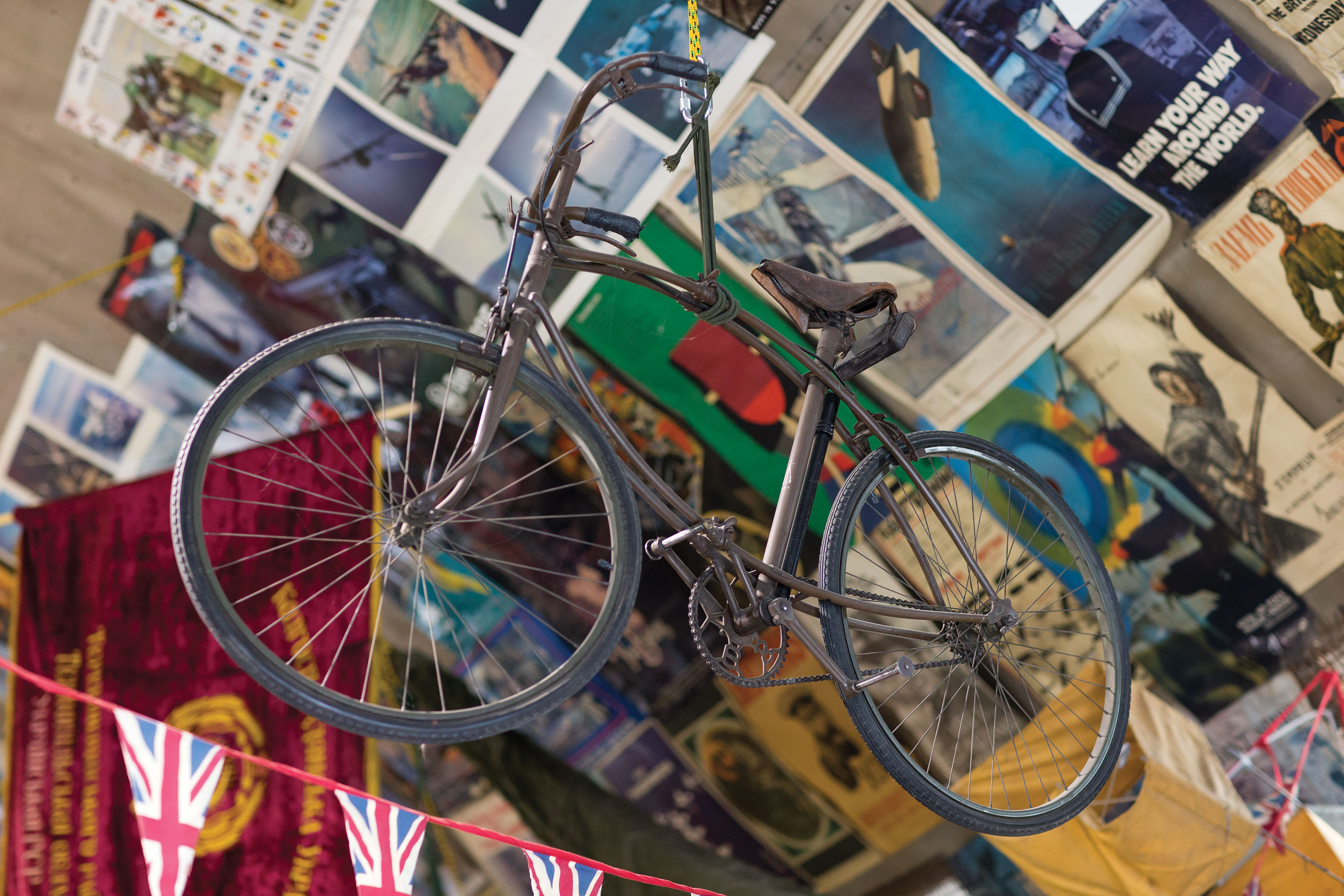
The helmets, 20 to a box, had been painted over and Norway’s coat of arms added (a lion wielding an axe on a shield with a crown). Cumming had them repainted—by hand—then sold the whole batch to a dealer in New Jersey.
Helmets have always been popular, but so have parachutes. Ranchers used them to cover grain. Cumming sold dozens of Willys Jeeps over the years at $300-$700 apiece, depending on roadworthiness. Not now. There’s one in the store and it’s not for sale.
There are two 1950s-era Triumph military motorcycles in stock, one still crated. A similar one listed online recently was selling for US$40,000.
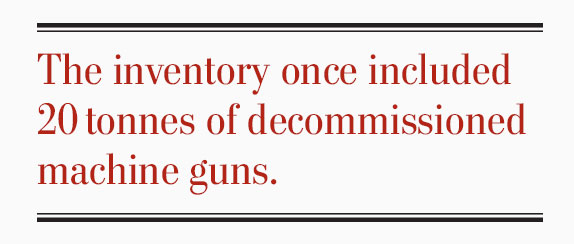
The nose section of a Bristol Blenheim bomber is mounted in one corner (a farmer brought it in 45 years ago) and there’s a Link Trainer flight simulator in another.
There are uniforms and C-rations, movie and recruitment posters, goggles and hats, flags, boots and backpacks. The inventory once included 20 tonnes of decommissioned machine guns.
“Mr. Cumming holds the record for stocking items that had absolutely no reason to be manufactured,” Hopkins once wrote for Crown’s annual catalogue. “Defying all the laws of merchandising, community relations, good taste, cleanliness and pricing, he has for years provided an enchanting shopping experience.”

Over the decades, as Cumming met all kinds of customers, collectors and dealers, the Second World War mementoes became less and less available. While John Cumming has expanded Crown Surplus in successful new directions, other surplus stores went by the wayside, and the characters, peddlers and collectors who formed his father’s network of sources have all but died off.
“I have one friend left in England who’s still alive. I’ve got another one in Vancouver. We don’t live forever. Pretty well everybody I used to do business with is gone. We even have a hard time finding collectors now.”
Advertisement












